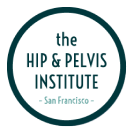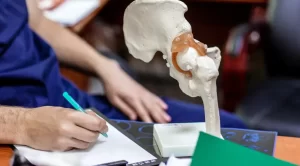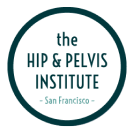Hip replacement surgery is a transformative procedure that significantly enhances mobility and quality of life for many individuals. However, the journey to complete recovery requires careful attention to pain management and rehabilitation strategies.
At The Hip and Pelvis Institute, led by Dr. Nicholas H. Mast, we focus on providing cutting-edge treatments coupled with comprehensive recovery plans that are seldom discussed in mainstream medical advice. Our approach emphasizes a holistic understanding of the recovery process, ensuring that patients not only regain function but also achieve long-term hip health.
This article explores unique, effective methods for managing pain and ensuring a successful post-hip replacement recovery.
Understanding Hip Replacement Surgery
Hip replacement surgery, also known as hip arthroplasty, involves the removal of damaged bone and cartilage from the hip joint and replacing it with prosthetic components. This procedure is typically recommended for patients with severe arthritis, hip fractures, or other degenerative hip conditions that have not responded to conservative treatments. The primary goal is to relieve pain, improve joint function, and enhance the patient’s overall quality of life.
Immediate Post-Surgery Expectations
Immediately following hip replacement surgery, patients can expect to stay in the hospital for a few days. During this period, medical staff will monitor vital signs, manage pain, and begin the initial stages of physical therapy. Early mobilization is encouraged to prevent complications such as blood clots and to start the recovery process. Patients will learn basic movements, such as getting in and out of bed, using a walker, and performing gentle exercises to promote circulation and prevent stiffness.
Managing Pain After Hip Surgery
Effective pain management is crucial for a successful recovery after hip replacement surgery. At The Hip and Pelvis Institute, we utilize a multi-faceted approach to pain relief that includes medication, physical therapy, and alternative methods. Medications such as non-steroidal anti-inflammatory drugs (NSAIDs), acetaminophen, and opioids are often prescribed to manage acute pain immediately following surgery. These medications help reduce inflammation and provide necessary pain relief during the early stages of recovery.
Effective Pain Management Tips
In addition to medication, several non-pharmacological strategies can significantly alleviate pain and discomfort. Applying ice packs to the hip area can reduce swelling and numb pain. Gentle, guided physical therapy exercises help restore movement and strengthen the hip muscles, which can reduce pain over time. It is also beneficial to practice controlled breathing and relaxation techniques to manage pain naturally.
Maintaining a regular schedule of rest and activity, as advised by your healthcare provider, ensures that the hip joint heals properly without unnecessary strain.
Patients are encouraged to communicate openly with their healthcare team about their pain levels and any concerns they may have. This allows for adjustments in the pain management plan to ensure optimal comfort and recovery.
Tips for Successful Hip Replacement Recovery
Rehabilitation and Physical Therapy
A structured rehabilitation and physical therapy program is critical for regaining strength and mobility after hip replacement surgery. Engaging in regular, guided exercises helps to rebuild muscle strength around the hip joint and improve overall function. Physical therapists at The Hip and Pelvis Institute tailor exercise regimens to each patient’s specific needs, ensuring a safe and effective recovery process.
Daily Activities and Adjustments
Making necessary adjustments to daily activities can significantly enhance recovery. Here are some essential tips for a successful hip replacement recovery:
- Use Assistive Devices: Utilize walkers, crutches, or canes as recommended to support mobility and reduce the risk of falls.
- Modify Home Environment: Arrange furniture and living spaces to minimize obstacles and ensure easy access to essential items.
- Follow Weight-Bearing Instructions: Adhere strictly to weight-bearing limitations advised by your surgeon to prevent stress on the new hip joint.
- Practice Good Posture: Maintain proper posture during all activities to avoid undue pressure on the hip.
- Incorporate Low-Impact Activities: Engage in low-impact exercises like swimming or cycling to enhance joint mobility without excessive strain.
- Stay Hydrated and Eat Nutritious Foods: Proper hydration and a balanced diet rich in vitamins and minerals support the healing process.
- Rest and Sleep Well: Ensure adequate rest and sleep to facilitate tissue repair and overall recovery.
By following these tips and working closely with healthcare professionals, patients can achieve a smooth and successful recovery, restoring their mobility and improving their quality of life.
What to Expect During the Recovery Process
Phases of Recovery
The recovery process after hip replacement surgery typically unfolds in several distinct phases, each with its own set of milestones and expectations:
- Immediate Post-Operative Phase (0-2 Weeks): During this phase, the focus is on managing pain, preventing blood clots, and beginning gentle physical therapy. Patients often use assistive devices to aid mobility and start performing basic exercises to promote circulation and reduce stiffness.
- Early Recovery Phase (2-6 Weeks): In this stage, patients gradually increase their activity levels under the guidance of a physical therapist. The emphasis is on regaining strength, improving range of motion, and performing daily activities independently. It’s crucial to follow weight-bearing restrictions and avoid movements that strain the new hip joint.
- Intermediate Recovery Phase (6-12 Weeks): As strength and mobility improve, patients can start more rigorous physical therapy exercises. Activities such as swimming and stationary cycling are often introduced to enhance joint flexibility and endurance. Pain should be significantly reduced, and normal daily routines become easier to manage.
- Long-Term Recovery Phase (3-6 Months): By this time, most patients return to their regular activities, including low-impact sports and hobbies. It’s essential to continue physical therapy exercises to maintain hip strength and prevent future issues. Full recovery, where the patient feels completely normal, may take up to a year.
Common Challenges and How to Overcome Them
Patients may encounter several challenges during the recovery process, including pain, swelling, and difficulty in mobility. Overcoming these challenges involves:
- Pain and Swelling: Use prescribed medications, ice packs, and elevation techniques to manage pain and reduce swelling.
- Mobility Issues: Adhere to physical therapy schedules and use assistive devices as needed to support movement.
- Mental and Emotional Hurdles: Maintain a positive mindset and seek support from family, friends, or support groups to navigate emotional challenges.
By understanding these recovery phases and proactively addressing common challenges, patients can achieve a successful and smooth recovery from hip replacement surgery.
Long-Term Health After Hip Replacement
Maintaining Hip Health
Maintaining hip health post-recovery is crucial for ensuring the longevity and function of the replaced joint. Engaging in regular low-impact exercises such as walking, swimming, and cycling helps keep the hip joint flexible and strong. Strength training exercises targeting the muscles around the hip, such as the glutes and thighs, are also beneficial in providing stability and support. Additionally, practicing good posture and body mechanics during daily activities can help prevent undue stress on the hip.
Regular Follow-Up and Monitoring
Regular follow-up appointments with your orthopedic surgeon are essential for monitoring the condition of the hip replacement and detecting any potential issues early. These visits typically involve physical examinations, X-rays, and discussions about any symptoms or concerns. Adhering to the recommended schedule for these check-ups ensures that any signs of wear or complications can be addressed promptly.
Lifestyle Adjustments
Incorporating lifestyle adjustments can significantly contribute to the long-term success of a hip replacement. Maintaining a healthy weight reduces the stress on the hip joint, while avoiding high-impact activities such as running and jumping can prevent damage to the prosthetic components. Smoking cessation and moderating alcohol intake also support overall joint health and recovery.
Conclusion
Successfully navigating the recovery process after hip replacement surgery requires a comprehensive approach that includes effective pain management, structured rehabilitation, and ongoing care. By understanding what to expect during each phase of recovery, utilizing pain relief strategies, and making necessary lifestyle adjustments, patients can achieve long-term health and mobility.
The Hip and Pelvis Institute, led by Dr. Nicholas H. Mast, is dedicated to providing personalized care and support throughout this journey.
For expert guidance and to ensure the best possible outcome for your hip health, call us at (415) 530-5330 to book an appointment today.









